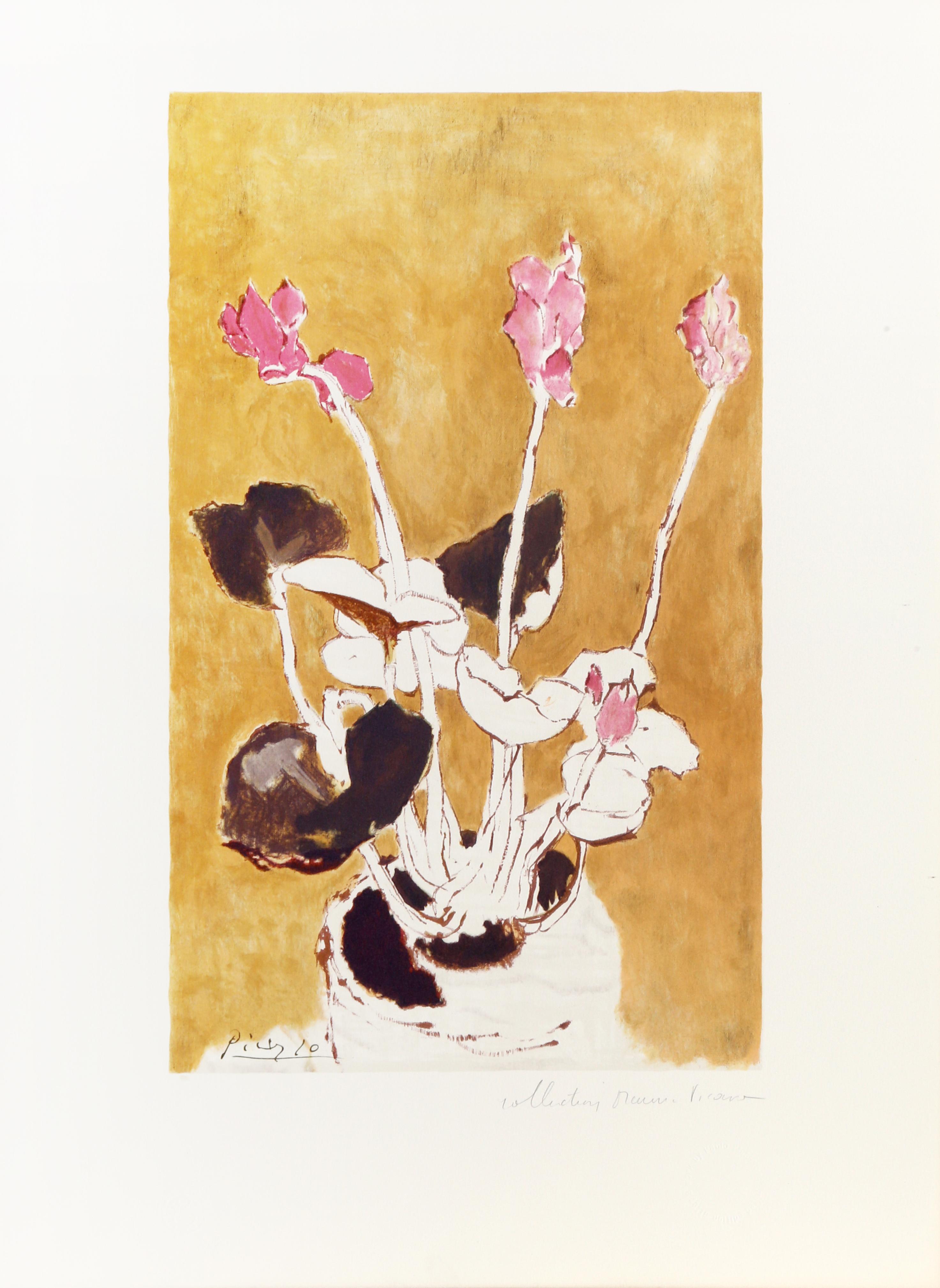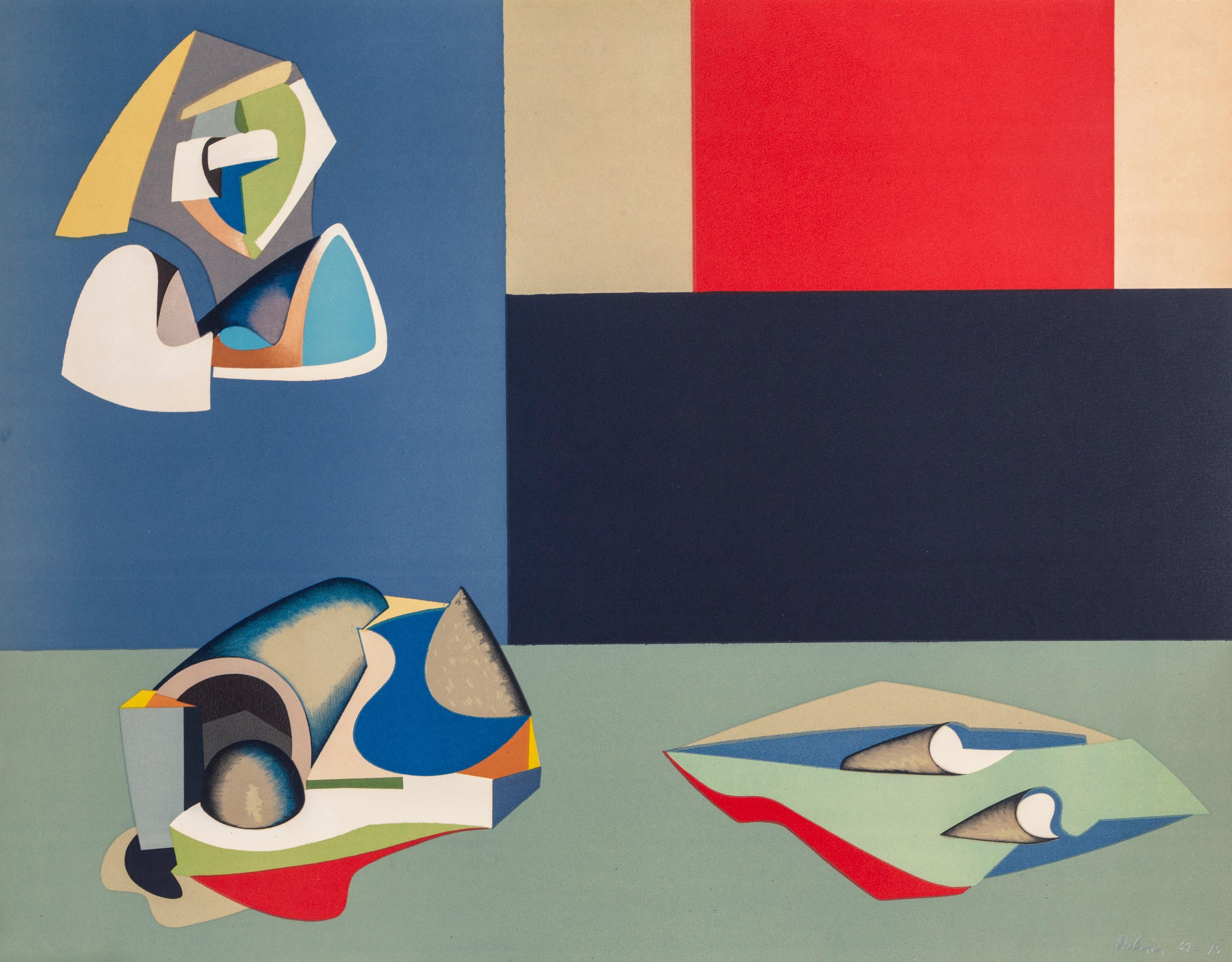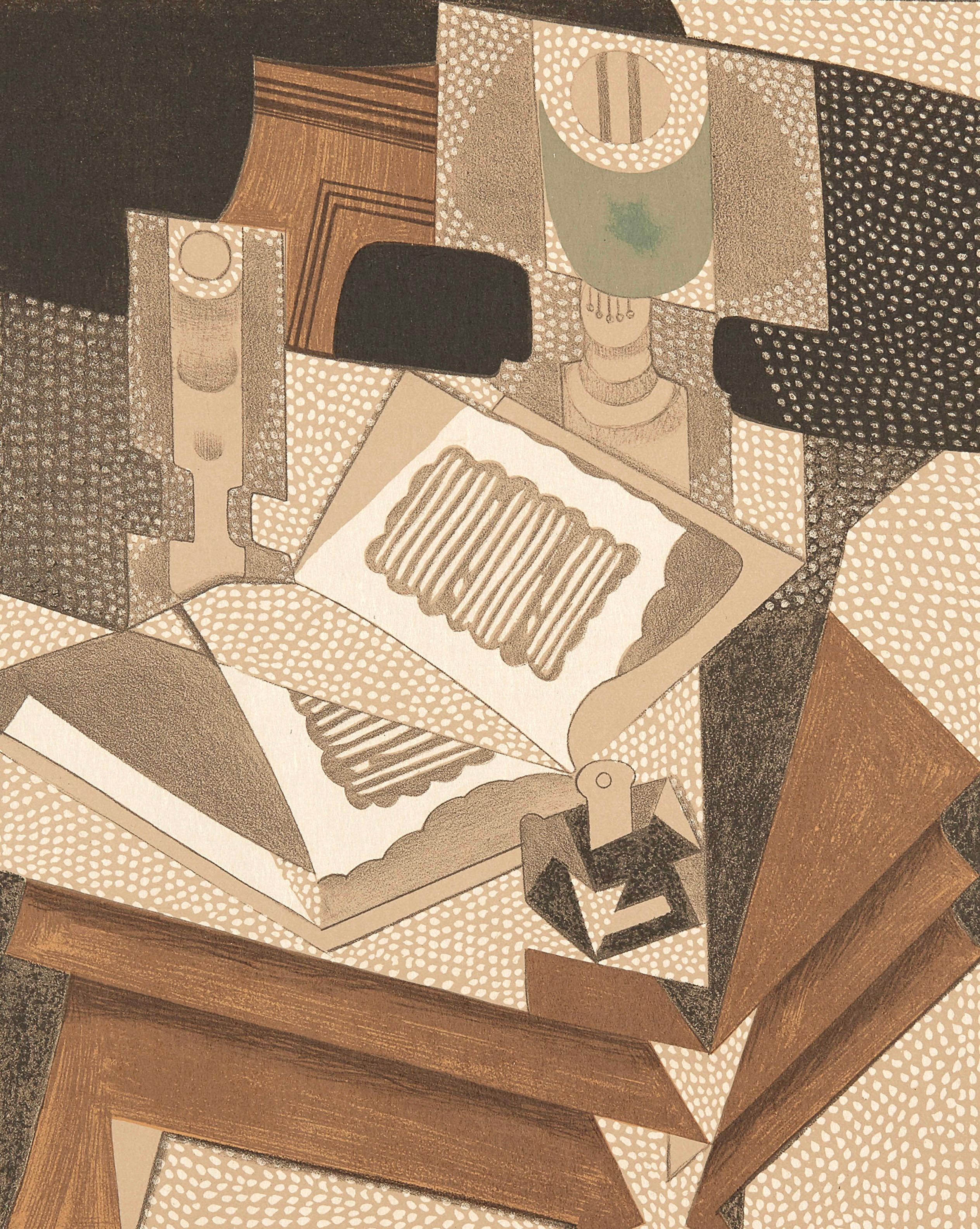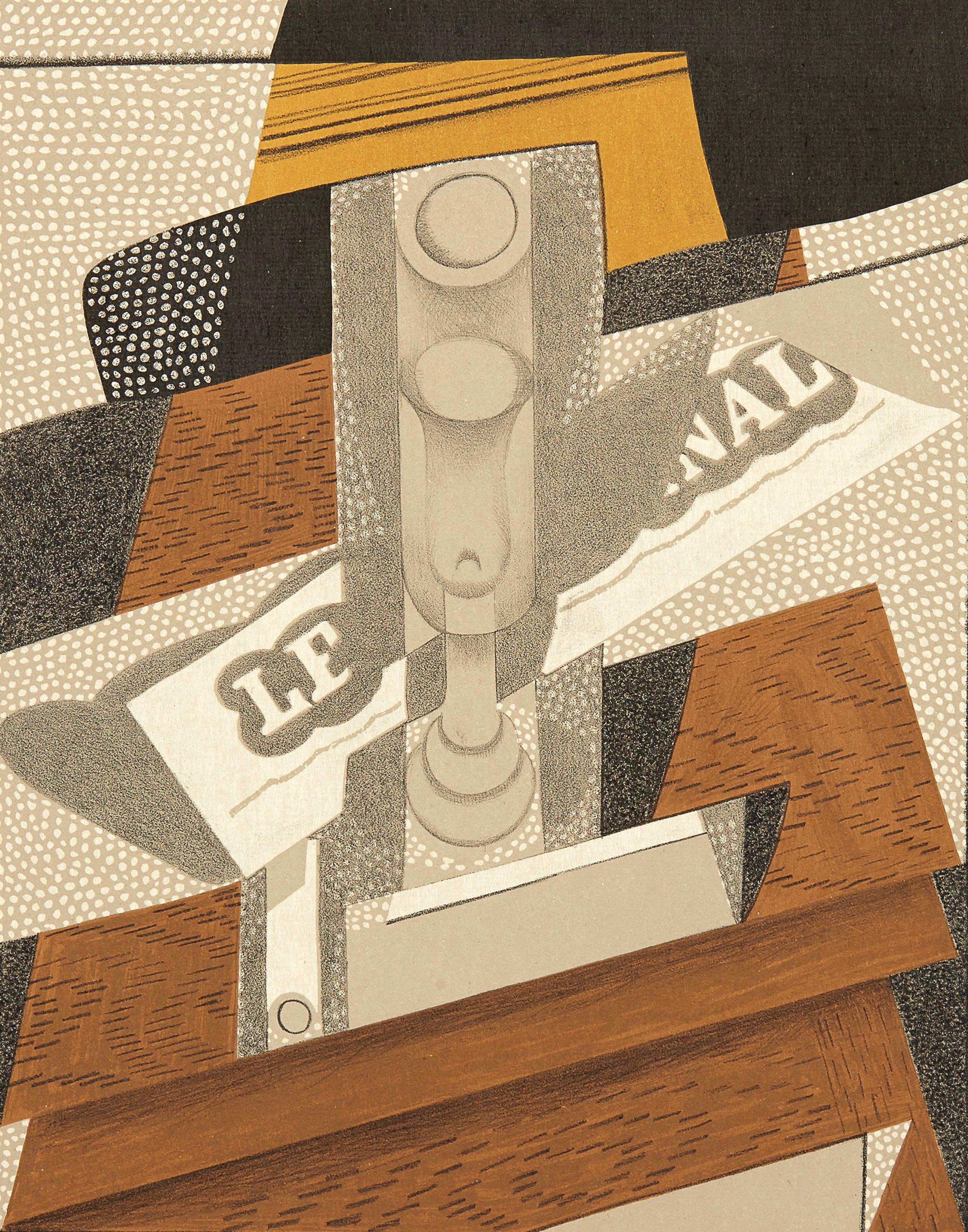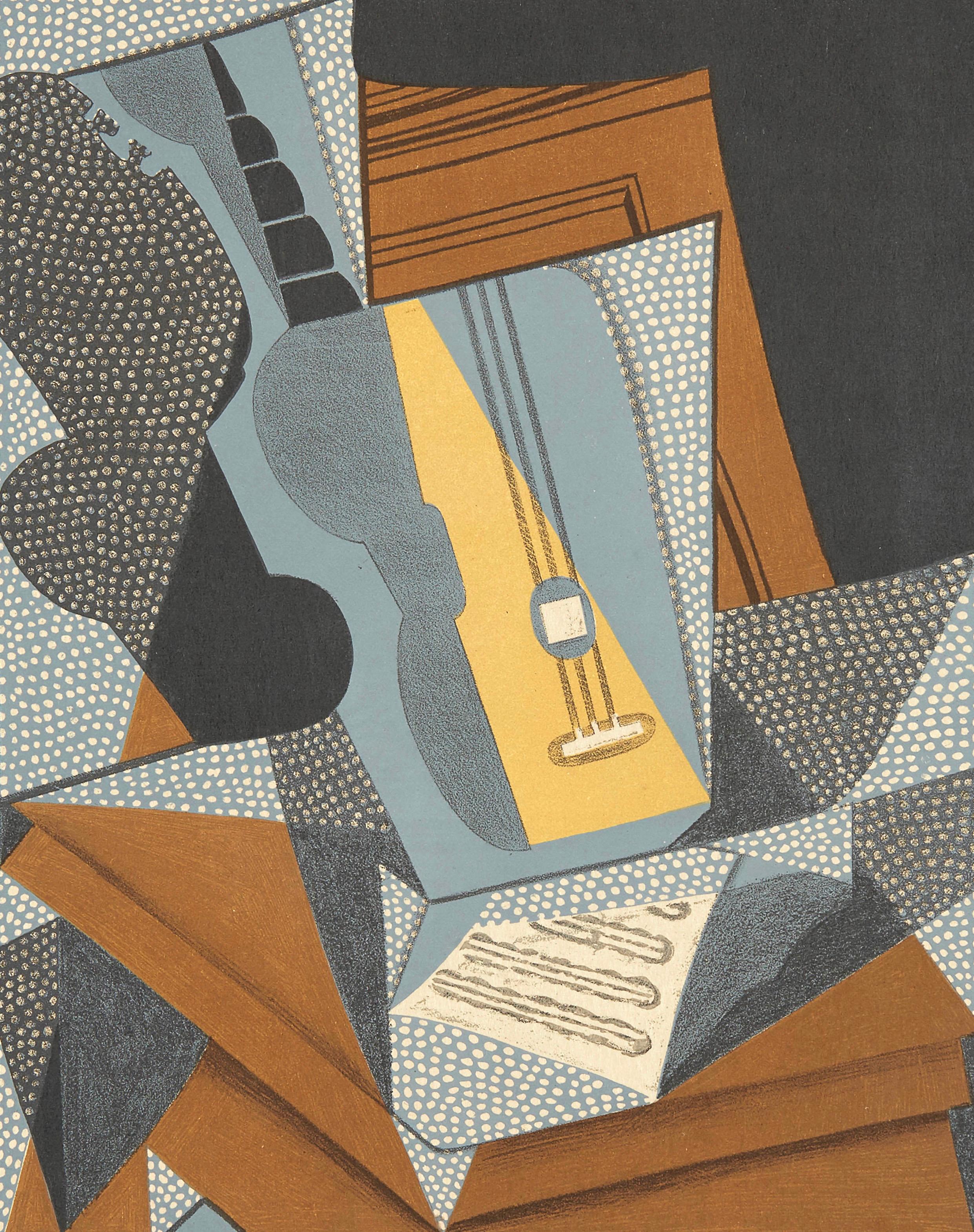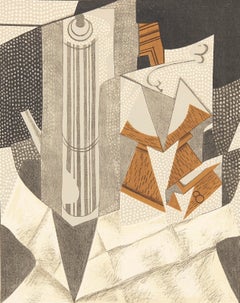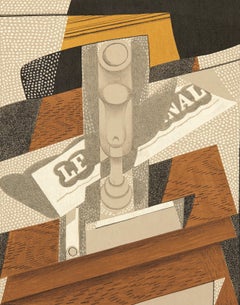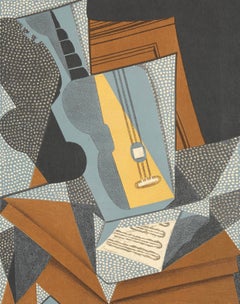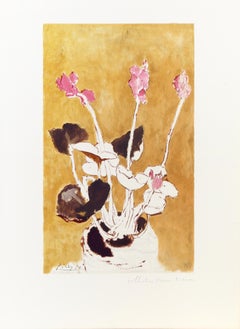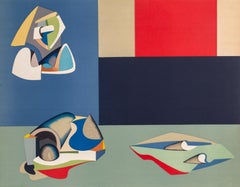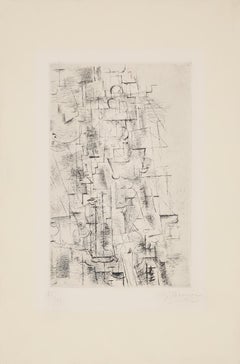Articoli simili a Léger, Les instruments de la Passion, Derrière le miroir (after)
Vuoi altre immagini o video?
Richiedi altre immagini o video al venditore
1 di 10
Léger, Les instruments de la Passion, Derrière le miroir (after)1951
1951
Informazioni sull’articolo
Lithograph on vélin paper. Paper Size: 15 x 22 inches, with centerfold, as issued. Inscription: Unsigned and unnumbered, as issued. Notes: From the folio, Derrière le miroir, Sur Quatre Murs, N° 36-37-38, 1951. Published by Aimé Maeght, Éditeur, Paris; printed by Éditions Pierre à Feu, Galerie Maeght, Paris, 1951. Additional notes: Excerpted from a Christie’s, New York lot essay, The life span of Derrière le Miroir was thirty-five years. Publication began in 1946. Aimé Maeght, initiator of Derrière le Miroir, had already made few attempts to start publications illustrated with fine printed lithographs in colours in the years prior to the launch of Derrière le Miroir. The name, Derrière le Miroir was suggested by Jacques Kober, manager of Galerie Maeght. The gallery had opened in 1945; the first number of Derrière le Miroir was released a year later. For this first issue Geer van Velde was invited to create lithographs to illustrate the publication. The lithographs in the first issue was printed by Mourlot, Paris. The first three issues of Derrière le Miroir were unsuccessful for Maeght as far as the edition size—the initial print-runs were far too large. From 30,000 for the first issue, the number was taken down to 10,000 for numbers two and three, until Derrière le Miroir number four was published in an edition of 1500. Maeght instituted a policy whereby unsold issues were recycled and used for the fabrication of new paper for the coming editions—this served to both conserve resources and also usually result in ultimate edition sizes far less than 1,500. With number four, the permanent format for Derrière le Miroir was established. Lithographs in colours were key; text was limited to comments on the featuring artist's exhibition taking place in the Galerie Maeght, and this catalogue format was defining to Derrière le Miroir. Galerie Maeght took on the leading role in Paris and presented all main artists including Braque, Matisse, Chagall, Léger, Bonnard, Chillida and many more. So too did Derrière le Miroir. The idea of a magazine was meanwhile still on the mind of Aimé Maeght. He found an insert as a solution. Two, and later four, pages of art review were inserted from 1952 onwards. In 1968 this find had ripened to independency and the dream of Aimé Maeght was now a tangible fact named l'Art vivant. Derrière le Miroir was on it's own again. Over 250 issues in a row. At that point publisher Aimé Maeght wished to make a mark with the publication of an hommage to all who once contributed to the magazine which came in the form of issue number 250, but was delayed by the death of Aimé Maeght. It was published after number 253 in 1982 and became a tribute to Aimé and Marguérite Maeght and 35 years of friendship with artists and poets. The era of Derrière le Miroir was closed with that final publication.
FERNAND LEGER (1881-1955) was a French painter, sculptor, and filmmaker. In his early works he created a personal form of cubism (known as "tubism") which he gradually modified into a more figurative, populist style. His boldly simplified treatment of modern subject matter has caused him to be regarded as a forerunner of pop art. Léger was born in Argentan, Orne, Lower Normandy, where his father raised cattle. Fernand Léger initially trained as an architect from 1897 to 1899, before moving in 1900 to Paris, where he supported himself as an architectural draftsman. After military service in Versailles, Yvelines, in 1902–1903, he enrolled at the School of Decorative Arts after his application to the École des Beaux-Arts was rejected. He nevertheless attended the Beaux-Arts as a non-enrolled student, spending what he described as "three empty and useless years" studying with Gérôme and others, while also studying at the Académie Julian. He began to work seriously as a painter only at the age of 25. At this point his work showed the influence of impressionism, as seen in Le Jardin de ma mère (My Mother's Garden) of 1905, one of the few paintings from this period that he did not later destroy. A new emphasis on drawing and geometry appeared in Léger's work after he saw the Cézanne retrospective at the Salon d'Automne in 1907. In 1909, he moved to Montparnasse and met Alexander Archipenko, Jacques Lipchitz, Marc Chagall, Joseph Csaky and Robert Delaunay. In 1910, he exhibited at the Salon d'Automne in the same room (salle VIII) as Jean Metzinger and Henri Le Fauconnier. In his major painting of this period, Nudes in the Forest, Léger displays a personal form of Cubism that his critics termed "Tubism" for its emphasis on cylindrical forms. In 1911, the hanging committee of the Salon des Indépendants placed together the painters identified as 'Cubists'. Metzinger, Albert Gleizes, Le Fauconnier, Delaunay and Léger were responsible for revealing Cubism to the general public for the first time as an organized group. The following year he again exhibited at the Salon d'Automne and Indépendants with the Cubists, and joined with several artists, including Le Fauconnier, Metzinger, Gleizes, Francis Picabia and the Duchamp brothers, Jacques Villon, Raymond Duchamp-Villon and Marcel Duchamp to form the Puteaux Group—also called the Section d'Or (The Golden Section) paintings, from then until 1914, became increasingly abstract. Their tubular, conical, and cubed forms are laconically rendered in rough patches of primary colors plus green, black and white, as seen in the series of paintings with the title Contrasting Forms. Léger made no use of the collage technique pioneered by Braque and Picasso. Fernand Léger's highest auction price is $70,062,496 USD for his painting Contraste de formes, set in 2017 at Christie's New York.
- Anno di creazione:1951
- Dimensioni:Altezza: 38,1 cm (15 in)Larghezza: 55,88 cm (22 in)
- Tecnica:
- Movimento e stile:
- Dopo:Fernand Léger (1881-1955, Francese)
- Periodo:
- Condizioni:
- Località della galleria:Auburn Hills, MI
- Numero di riferimento:1stDibs: LU1465216417162
Informazioni sul venditore
4,9
Venditore Platino
Venditori Premium con valutazione 4.7+ e tempi di risposta entro 24 ore
Fondazione nel 1978
Venditore 1stDibs dal 2021
1.106 vendite su 1stDibs
Tempo di risposta standard: <1 ora
- SpedizioneRecupero del preventivo…Spedizione da: Auburn Hills, MI
- Politica di reso
Alcune parti di questa pagina sono state tradotte automaticamente. 1stDibs non può garantire che le traduzioni siano corrette. L’inglese è la lingua predefinita del sito.
Garanzia di autenticità
Nell’improbabile caso in cui si verifichi un problema con l’autenticità di un articolo, contattaci entro un anno per ottenere un rimborso completo. DettagliGaranzia di rimborso
Se il tuo articolo non corrisponde alla descrizione, è danneggiato durante il trasporto o non arriva, contattaci entro 7 giorni per un rimborso completo. DettagliAnnullamento entro 24 ore
Hai un periodo di tolleranza di 24 ore per annullare il tuo acquisto, senza necessità di fornire spiegazioni.Venditori professionali selezionati
I nostri venditori di livello internazionale devono aderire a rigorosi standard di servizio e qualità, garantendo l’integrità delle inserzioni.Garanzia miglior prezzo
Se scopri che un venditore ha pubblicato altrove lo stesso articolo a un prezzo più basso, applicheremo lo stesso prezzo.Consegna globale affidabile
La nostra rete di vettori leader del settore offre opzioni di spedizione specializzate in tutto il mondo, inclusa la consegna personalizzata.Altro da questo venditore
Mostra tuttoGris, Le Livre (Kahnweiler 26), Au Soleil du Plafond (dopo)
Di Juan Gris
Litografia su carta vélin des papeteries d'Arches. Formato carta: 16,93 x 12,99 pollici. Iscrizione: Non firmato e non numerato, come emesso. Catalogo ragionato di riferimento: Kahnw...
Categoria
Anni 1950, Cubismo, Stampe astratte
Materiali
Litografia
1.996 USD Prezzo promozionale
20% in meno
Spedizione gratuita
Gris, Le Moulin à Café II (Kahnweiler 26), Au Soleil du Plafond (dopo)
Di Juan Gris
Litografia su carta vélin des papeteries d'Arches. Formato carta: 16,93 x 12,99 pollici. Iscrizione: Non firmato e non numerato, come emesso. Catalogo ragionato di riferimento: Kahnw...
Categoria
Anni 1950, Cubismo, Stampe astratte
Materiali
Litografia
1.996 USD Prezzo promozionale
20% in meno
Spedizione gratuita
Gris, La Pipe (Kahnweiler 26), Au Soleil du Plafond (dopo)
Di Juan Gris
Litografia su carta vélin des papeteries d'Arches. Formato carta: 16,93 x 12,99 pollici. Iscrizione: Non firmato e non numerato, come emesso. Catalogo ragionato di riferimento: Kahnw...
Categoria
Anni 1950, Cubismo, Stampe astratte
Materiali
Litografia
1.996 USD Prezzo promozionale
20% in meno
Spedizione gratuita
Gris, Guitare (Kahnweiler 26), Au Soleil du Plafond (dopo)
Di Juan Gris
Litografia su carta vélin des papeteries d'Arches. Formato carta: 16,93 x 12,99 pollici. Iscrizione: Non firmato e non numerato, come emesso. Catalogo ragionato di riferimento: Kahnw...
Categoria
Anni 1950, Cubismo, Stampe astratte
Materiali
Litografia
1.996 USD Prezzo promozionale
20% in meno
Spedizione gratuita
Gris, Violino (Kahnweiler 26), Au Soleil du Plafond (dopo)
Di Juan Gris
Litografia su carta vélin des papeteries d'Arches. Formato carta: 16,93 x 12,99 pollici. Iscrizione: Non firmato e non numerato, come emesso. Catalogo ragionato di riferimento: Kahnw...
Categoria
Anni 1950, Cubismo, Stampe astratte
Materiali
Litografia
1.996 USD Prezzo promozionale
20% in meno
Spedizione gratuita
Gris, La Soupière (Kahnweiler 26), Au Soleil du Plafond (dopo)
Di Juan Gris
Litografia su carta vélin des papeteries d'Arches. Formato carta: 16,93 x 12,99 pollici. Iscrizione: Non firmato e non numerato, come emesso. Catalogo ragionato di riferimento: Kahnw...
Categoria
Anni 1950, Cubismo, Stampe astratte
Materiali
Litografia
1.996 USD Prezzo promozionale
20% in meno
Spedizione gratuita
Ti potrebbe interessare anche
Les Cyclamens, litografia cubista (after) Pablo Picasso
Di Pablo Picasso
Appoggiato su una superficie con uno sfondo giallo oro, il vaso di ciclamini è reso con linee sciolte e fluide e colori minimi. Una litografia della Marina Picasso Estate Collection ...
Categoria
Fine XX secolo, Cubismo, Stampe astratte
Materiali
Litografia
Composizione cubista, litografia di Jean Helion
Di Jean Hélion
Jean Hélion è stato un pittore francese (1904 - 1987) il cui lavoro astratto degli anni '30 lo ha consacrato come uno dei principali modernisti. Il suo rifiuto dell'astrazione a metà...
Categoria
Anni 1930, Cubismo, Stampe astratte
Materiali
Litografia
Nature morte I (Natura morta I) - Moderno, Astratto, Acquaforte, Bianco e Nero
Di Georges Braque
L'attuale incisione è numerata "29/50" in basso a sinistra e firmata "G. Braque" in basso a destra. Filigrana "ARC" in basso a destra.
Dimensioni del foglio: 56,8 x 38,1 cm
Dimensi...
Categoria
Anni 1950, Cubismo, Stampe astratte
Materiali
Acquaforte
Composizione cubista, litografia firmata da Will Mentor
Di Will Mentor
Artista: Will Mentor, americano (1958 - )
Titolo: Composizione cubista
Anno: 1990
Media: Acquaforte e acquatinta, firmata e numerata a matita
Edizione: 13/75
Formato carta: 33.5 x ...
Categoria
Anni 1990, Cubismo, Stampe (natura morta)
Materiali
Acquaforte, Acquatinta
Bouquet
Di Georges Lambert
Questa litografia fa parte della mia collezione privata dagli anni '70 ed è in ottime condizioni. Georges Lambert è stato un artista francese dal 1919 al 1998. An He è stato un pitto...
Categoria
XX secolo, Scuola francese, Stampe (natura morta)
Materiali
Litografia
240 USD Prezzo promozionale
20% in meno
Finestra
Francis Tailleux era un francese nato a Parigi nel 1913-1981. An He ha creato il suo stile. An He è stato influenzato da Gruber, Marchand e Tal Coat. Ha allestito numerose mostre per...
Categoria
Metà XX secolo, Astratto, Stampe astratte
Materiali
Colore, Litografia
640 USD Prezzo promozionale
46% in meno
